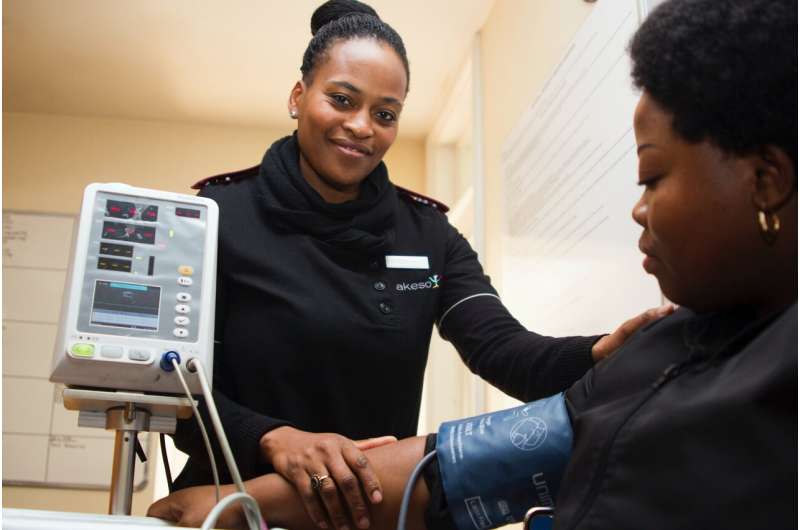Credit: Unsplash/CC0 Public Domain
An analysis of healthcare data in Ontario, Canada found a significant decline in referrals and procedures performed for common cardiac interventions after the onset of the COVID-19 pandemic. Patients awaiting coronary bypass surgery or stenting were at higher risk of dying while waiting for their procedure compared to before the pandemic, although wait times were not longer. The study underscores the importance of timely recognition of symptoms and treatment in patients at high risk for cardiovascular disease, researchers observed in the Canadian Journal of Cardiology.
"In the first wave of the COVID-19 pandemic, we kept hearing stories from patients and other doctors that there were delays in care for patients with heart disease," explained lead investigator Harindra C. Wijeysundera, MD, Ph.D., Institute of Health Policy, Management and Evaluation, University of Toronto; ICES; and Division of Cardiology, Department of Medicine, Schulich Heart Program, Sunnybrook Health Sciences Centre, University of Toronto, Toronto, Canada. "We decided to look into these claims using the Ontario database that keeps track of wait lists and wait times for individuals with heart disease who require a procedure or surgery."
Wait lists for procedures are not unusual in publicly funded healthcare systems. Canadian provinces routinely monitor and publish waiting times for cardiac care. The researchers were able to link multiple population-based administrative data sources and clinical registries housed at ICES, Canada's largest health services research institute. The study looked at patients over the age of 18 who were referred for four commonly performed cardiac procedures: percutaneous coronary intervention (PCI); isolated coronary bypass grafting (CABG); valve surgery (aortic, mitral, or tricuspid); or transcatheter aortic valve implantation (TAVI) from January 1, 2014 to September 30, 2020. For the purposes of the study, the onset of the COVID-19 pandemic was defined as March 15, 2020, when Ontario health authorities issued a directive that cancelled elective surgical procedures. Outcomes were defined as death while awaiting procedure and hospitalization while waiting for procedure.
A total of 584,341 patients were identified, of whom 37,718 were referred during the pandemic. As expected, a decline in referrals was observed at the outset of the pandemic, although those numbers steadily increased throughout the pandemic period. Similarly, researchers observed an initial decline in the number of procedures performed. Individuals waiting for coronary bypass surgery or stenting were at higher risk of dying while waiting for their procedure compared to before the pandemic. Surprisingly, mortality rates increased even though wait times did not during the pandemic, suggesting patients may have delayed in presenting to their doctors with symptoms.
"We found that the increase in wait list mortality was consistent across patients with stable coronary artery disease, acute coronary syndrome, or emergency referral," said Dr. Wijeysundera. "Coupled with reduced referrals, this raises concerns of a care deficit due to delays in diagnosis and wait list referral."
The researchers suggest a number of potential explanations for the decline in referrals during the pandemic, from patient factors such as fear of contracting COVID-19 in the hospital or concerns about missing work, to system factors including delays in testing and hospital bed and staffing pressures.
In an accompanying editorial, Michelle M. Graham, MD, and Christopher S. Simpson, MD, Division of Cardiology and Department of Medicine, University of Alberta and Mazankowski Alberta Heart Institute (MMG), and the Division of Cardiology and Department of Medicine, Queen's University (CS), Edmonton, and Kingston, Canada, stressed that moving outpatients on a wait list system should not be dependent on patient self-reporting a change in symptoms. In contrast, patients in hospital are continuously monitored and evaluated, allowing deterioration to be detected in a timelier way.
"When patients are at home," they said, "nobody is watching. 'The Missing Patient' must be recognized now by policy makers, decision makers, and health system funders."
This research suggests that any reduction in cardiac procedural capacity to accommodate critically ill COVID-19 patients must be balanced against the real risk for wait list mortality observed in this study. "We believe this is highly relevant to the recovery phase of the pandemic," commented Dr. Wijeysundera. "Efforts must target not only increasing capacity to treat patients on the wait lists, but also efforts must be made to identify upstream barriers that have prevented patients from getting on the wait list."
More information: The Impact of the COVID-19 Pandemic on Cardiac Procedure Wait List Mortality in Ontario, Canada, Canadian Journal of Cardiology, DOI: 10.1016/j.cjca.2021.05.008
Journal information: Canadian Journal of Cardiology
Provided by Elsevier
























